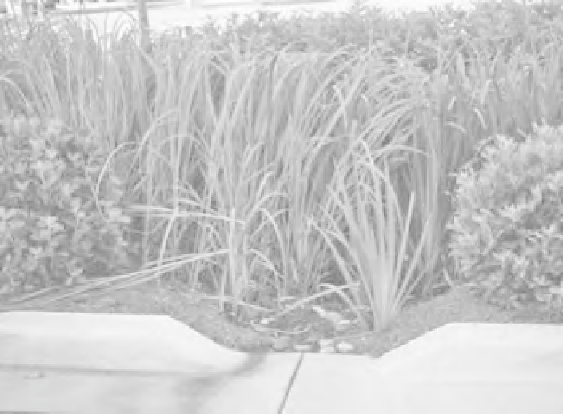Environmental Engineering Reference
In-Depth Information
The most common variation includes a gravel or sand bed underneath the
planting bed. The original intent of this design, however, is to perform as a filter
BMP utilizing an underdrain with subsequent discharge. Should a designer decide
to use a gravel or sand bed for volume storage under the planting bed, additional
design elements such as separation fabric and piping should be considered. Plant
species composition generally depends on how often water is expected to pond
in the rain garden. For southern California, species will probably need to be
drought-tolerant plants that can handle occasional inundation during the rainy
season.
Various methods are available to allow runoff to enter rain gardens. Pretreat-
ment of runoff should be provided where sediment or pollutants entering the rain
garden may cause concern or decreased functionality of the BMP, such as from
parking areas; rooftop runoff may need little or no pretreatment. Soil erosion con-
trol mats or blankets, plus energy dissipaters, should be used where concentrated
runoff flows from impervious areas into the rain garden.
Curbs can be used to direct runoff from an impervious surface along a gutter
to a low point where it flows into the rain garden through a curb cut. Curb
cuts may be depressed curbs, as shown in Figure 7-17, or may be full-height
curbs with openings cast or cut into them. Trench drains can accept runoff from
impervious surfaces and convey it to a rain garden (Figure 7-18). The trench
drain may discharge to the surface of the rain garden or may connect directly
to an aggregate infiltration bed beneath. Figure 7-19 depicts a linear rain garden
feature along a highway. Runoff is conveyed along the concrete curb (bottom of
photo) until it reaches the end of the gutter, where it spills into the vegetated area.
Figure 7-17
Rain garden curb cut.












Search WWH ::

Custom Search